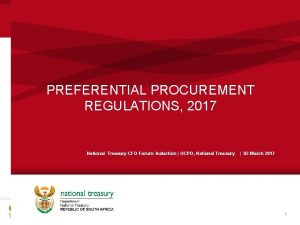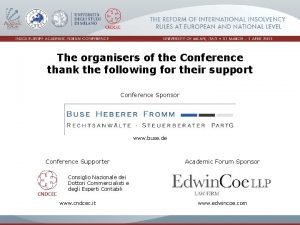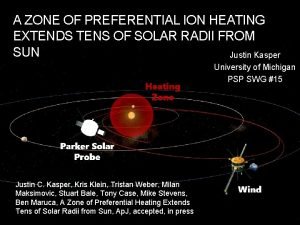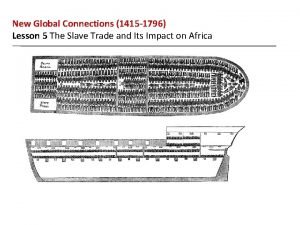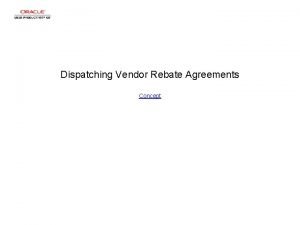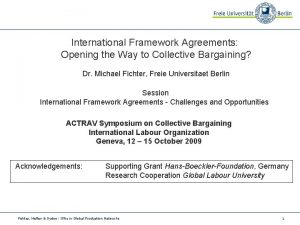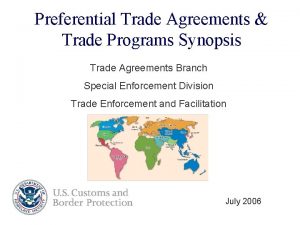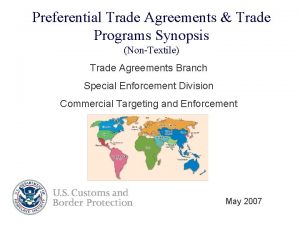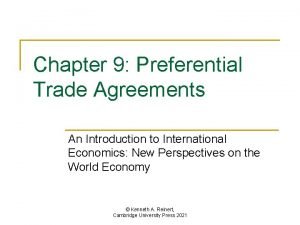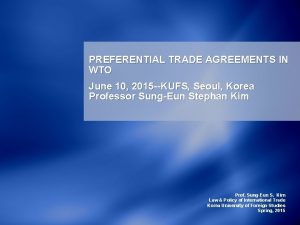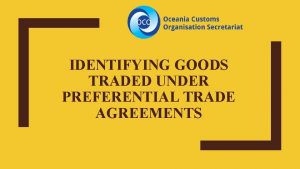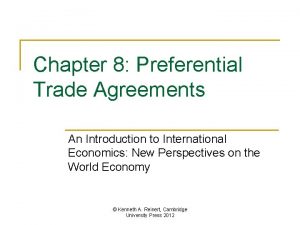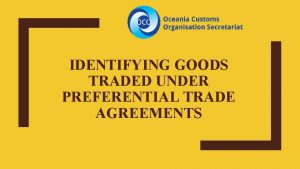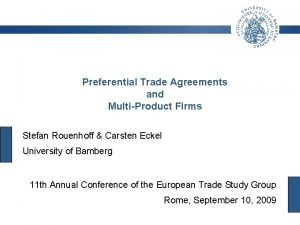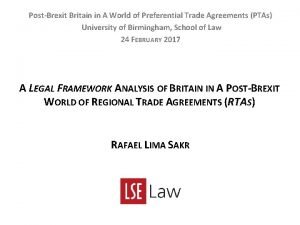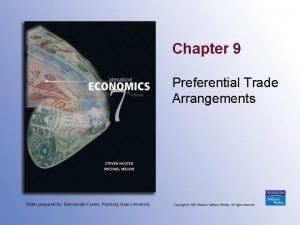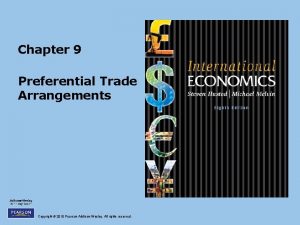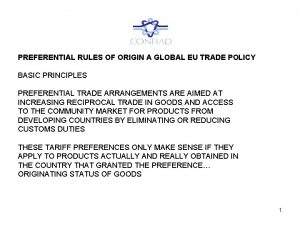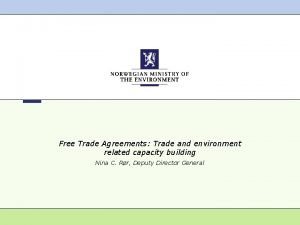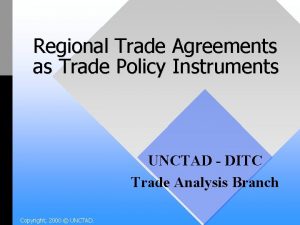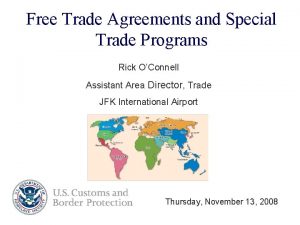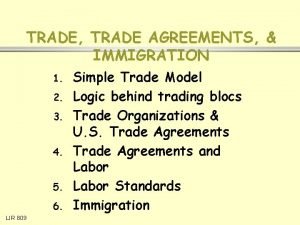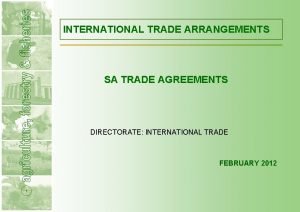Assessing the Impact of Preferential Trade Agreements A


























- Slides: 26

Assessing the Impact of Preferential Trade Agreements: A Disaggregated Approach Economics Brown Bag Series Jad Chaaban 16/03/2007

Let me start by a story • A Lebanese policy maker asks you, a professional economist, for advice on the following: – Should we sign a free trade agreement with Europe? – If yes, how can we evaluate the impact this agreement would have on our consumers and producers?

In fact, the EU has had a long history of agreements with Lebanon • A cooperation agreement between the European Community and Lebanon was signed in 1978 • The cooperation agreement did not come into force • In 1995, Lebanon joined the Barcelona process and Euro-Mediterranean partnership • In 2002, Lebanon signed an interim association agreement with the European Union • On May 1, 2004, Lebanon joined the European Neighborhood Policy talks

What to do? First, you go home, and review the literature on trade agreements • This agreement is a typical Preferential Trade Agreement (PTA) – consumers benefit from lower import prices – cheaper imported inputs for producers – Yet stiffer competition; the government looses revenue • Trade diversion and trade creation are at stake: other trade imports (Arab countries) might be hurt as a result of trade diversion • Bhagwati and Panagariya, 1996; Winters, 2004

Then you look at the overall context of Lebanon’s relation with the EU • Lebanon is facing fierce competition in the region • The EU has a long history of economic agreements with Mediterranean Partner Countries MPC • The Association Agreement entered into force in only 4 countries • Early signatures and economic fundamentals have played a role (Baker, 2004) • Growth competitiveness central in explaining divergence among partners

Diverse features of MPC economies (2004) (Baker, 2004)

Status of EU-Med Cooperation (Baker, 2004)

Trade between EU and MPC (billion EUR) (Eurostat)

Then you see what other free trade agreements were already in place • Lebanon has one multilateral free trade agreement that GAFTA (Greater Arab Free Trade Area) • several other bilateral trade agreements with individual Arab countries. • Yet the share of total imports under these agreements evolved from 3. 69% in 1997 to 4. 34% in 2002 • low but expected to be boosted upward after the Association Agreement with the European Union, Lebanon’s main trading partner, comes into effect in 2007.

Evolution of Imports under PTAs 1997 -2002

Then, you narrow down the question • What is the impact of the EU PTA on the Lebanese import sector? • Will the EU have trade creation to an extent that hurts other partner countries’ exports to Lebanon?

To answer this, the tools are available • The typical approach here is to estimate a “gravity” equation which represents bilateral trade flows as a function of – income, population, distance between trading partners and membership in a common regional arrangement – Frankel, 1997, Soloaga and Winters, 1998 and Cernat, 2001); François and Reinert (1997).

Gravity Model

Gravity Model • Typical Determinants of volume of trade 1. Economic size 2. Distance 3. Cultural affinity 4. Geography 5. Multinational corporations 6. International institutions 7. Political borders

Gravity Model • Related to Newton Law • Estimates of the effect of distance from the gravity model predict that a 1% increase in the distance between countries is associated with a decrease in the volume of trade of 0. 7% to 1% • Generalized gravity model: • Adding other controls:

Perfect, you go to the policy maker with estimates, but…he is unhappy! • The policy maker wants to know the impact on imports IN EACH SECTOR • Because he/she believes that the Agreement will have different effects depending on sectors (textile, agriculture, industry…) • Can the gravity model answer this? No, because handles only aggregate figures

What can you do? • In this paper we propose a methodology that allows: – Sector-specific evaluation of trade creation and trade diversion – Handles very disaggregated data: Using for the first time data from a national Customs database, highly disaggregated transaction-based – Theory: Based on Consumer Choice Theory – Model: Simple to formulate – Estimation: Empirical specification simple to estimate

Model • Demand system that satisfies basic economic assumptions on consumer behavior. • Allows for direct and straightforward inference on consumer reaction to prices. • Consistent with aggregation: the final demand for a given good obtained by direct aggregation of individual consumer demands. • Deaton and Muellbauer (1980) • Notation: • Subscripts i and j denote distinct imported goods (food, textiles, machinery…). Subscripts h and k denote sources (regions from which the goods are imported: European Union, North America, …).




Detailed assessment of the impact of EU agreement • Evaluate the effects of the Lebanon-European Union PTA on the Lebanese import sector • An exceptional, highly disaggregated, dataset on Lebanese import transactions for 1997 -2002 • Results show that trade creation occurs for most import sections from the EU, while trade diversion only occurs in a small number of sections for Arab and regional countries and North and Latin America. • The Rest of the World stands to loose the most from the EU’s PTA with Lebanon, with decreasing import shares in almost all import sections.




 What is preferential allotment
What is preferential allotment Strengths and weaknesses of pacifism
Strengths and weaknesses of pacifism Preferential option for the poor poster
Preferential option for the poor poster Preferential procurement regulations 2017
Preferential procurement regulations 2017 Heti internship
Heti internship Preferential creditors
Preferential creditors Preferential
Preferential Gender preferential speech features
Gender preferential speech features 9 6 5
9 6 5 How does location affect trade
How does location affect trade Australia natural resources
Australia natural resources Lesson 5 the slave trade and its impact on africa
Lesson 5 the slave trade and its impact on africa Fair trade not free trade
Fair trade not free trade Trade diversion and trade creation
Trade diversion and trade creation Trade diversion and trade creation
Trade diversion and trade creation Trade diversion and trade creation
Trade diversion and trade creation Liner shipping and tramp shipping
Liner shipping and tramp shipping The trade in the trade-to-gdp ratio
The trade in the trade-to-gdp ratio Which is the most enduring free trade area in the world?
Which is the most enduring free trade area in the world? What is triangle trade
What is triangle trade Vendor rebate agreement
Vendor rebate agreement Yalta conference agreements
Yalta conference agreements What are international hardwood agreements
What are international hardwood agreements International framework agreements
International framework agreements Mpi salary bands
Mpi salary bands Lrb bc
Lrb bc Thompson pyramid model of integrative agreements
Thompson pyramid model of integrative agreements



